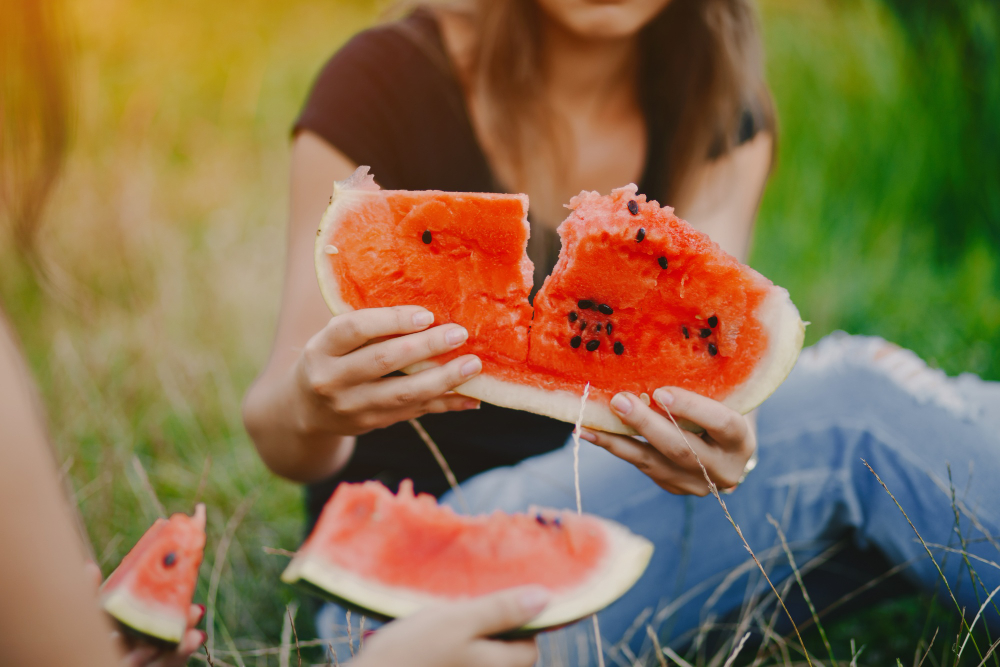How to Pick a Good Watermelon
Picking a good watermelon can sometimes feel like a game of chance, with the promise of sweet, juicy bliss or disappointing blandness hanging in the balance. However, with a few simple tips and tricks, you can become a master at choosing the perfect watermelon every time. Let’s delve into the art of watermelon selection and uncover the secrets to picking a winner.
Checking for Signs of Ripeness
The first step in selecting a good watermelon is to examine the stem end, where the fruit was attached to the vine. Look for a dry, brown stem with minimal greenery remaining. A fully dried stem indicates that the watermelon was harvested when it was ripe and ready to be picked. If the stem is still green or has any traces of green attached, it may indicate that the watermelon was picked prematurely and is not yet fully ripe.
Opting for Heaviness
A ripe watermelon should feel heavy for its size, indicating that it is full of water and juice. When you lift the watermelon, it should feel substantial and dense, with a weight that matches its size. Avoid choosing watermelons that feel too light for their size, as they may be lacking in moisture and flavor. Heaviness is a good indicator of juiciness and ripeness in a watermelon.
Seeking Symmetry
Inspect the overall shape of the watermelon, aiming for one that is uniformly round or oval in shape. Irregularities or asymmetrical bulges may indicate uneven ripening or inconsistent growth conditions, potentially affecting the flavor and texture of the fruit. Choose a watermelon that appears symmetrical and free of lumps or bumps for the best eating experience.
Seeking Vibrant Colors and Contrasts
The rind of a ripe watermelon should have vibrant colors and distinct contrasts between the stripes or spots. Look for a deep green color with bright, contrasting stripes or spots in a darker shade of green. Avoid watermelons with dull or faded rinds, as they may indicate overripeness or lack of freshness. A vibrant, colorful rind is a sign of a flavorful and juicy watermelon.
Listening for the Sound of Ripeness
One of the classic methods for determining watermelon ripeness is by giving it a gentle tap or thump and listening to the sound it produces. A ripe watermelon should produce a deep, hollow sound, similar to a drumbeat. If the sound is dull or flat, it may indicate that the watermelon is underripe or overripe. Trust your ears and choose a watermelon that produces a satisfyingly hollow sound when thumped.
Spotting the Ground Spot
Flip the watermelon over and examine the underside, known as the belly or ground spot. Look for a creamy yellow or orange-colored spot where the watermelon rested on the ground as it ripened. A well-developed ground spot indicates that the watermelon was allowed to fully ripen on the vine before being harvested. Avoid watermelons with white or greenish ground spots, as they may be underripe.
Finding the Right Fit
Finally, consider the size of the watermelon and choose one that fits your needs and preferences. Whether you’re looking for a small personal-sized melon or a large one to feed a crowd, there’s a watermelon size to suit every occasion. Keep in mind that larger watermelons tend to have more flavor and juiciness, while smaller ones may be more convenient for storage and serving.
Enjoying the Fruits of Your Labor
In conclusion, selecting a good watermelon is all about using your senses and paying attention to key indicators of ripeness and freshness. By checking the stem, assessing the weight, looking for uniform shape, examining the rind, giving it a thump, checking the belly, and considering the size, you can confidently pick a watermelon that is ripe, juicy, and bursting with flavor. So, next time you’re at the market or grocery store, put these tips to the test and enjoy the sweet rewards of choosing the perfect watermelon.
